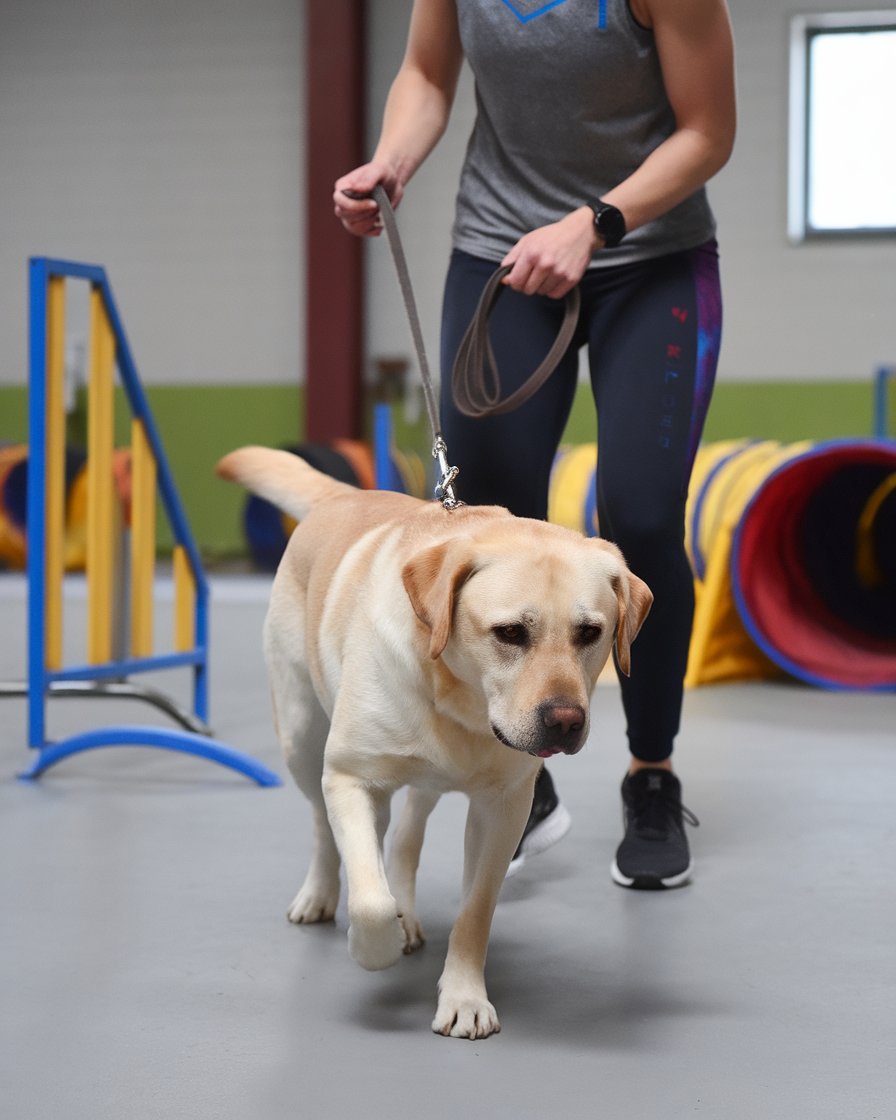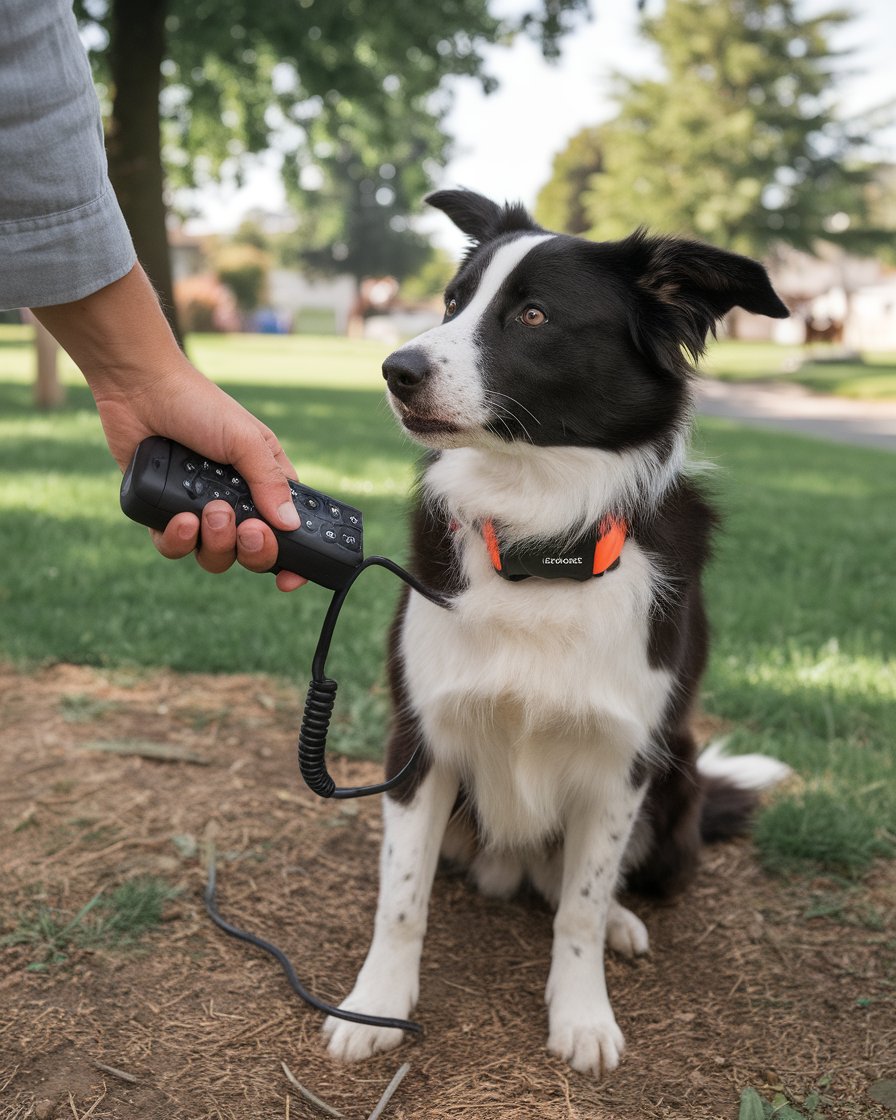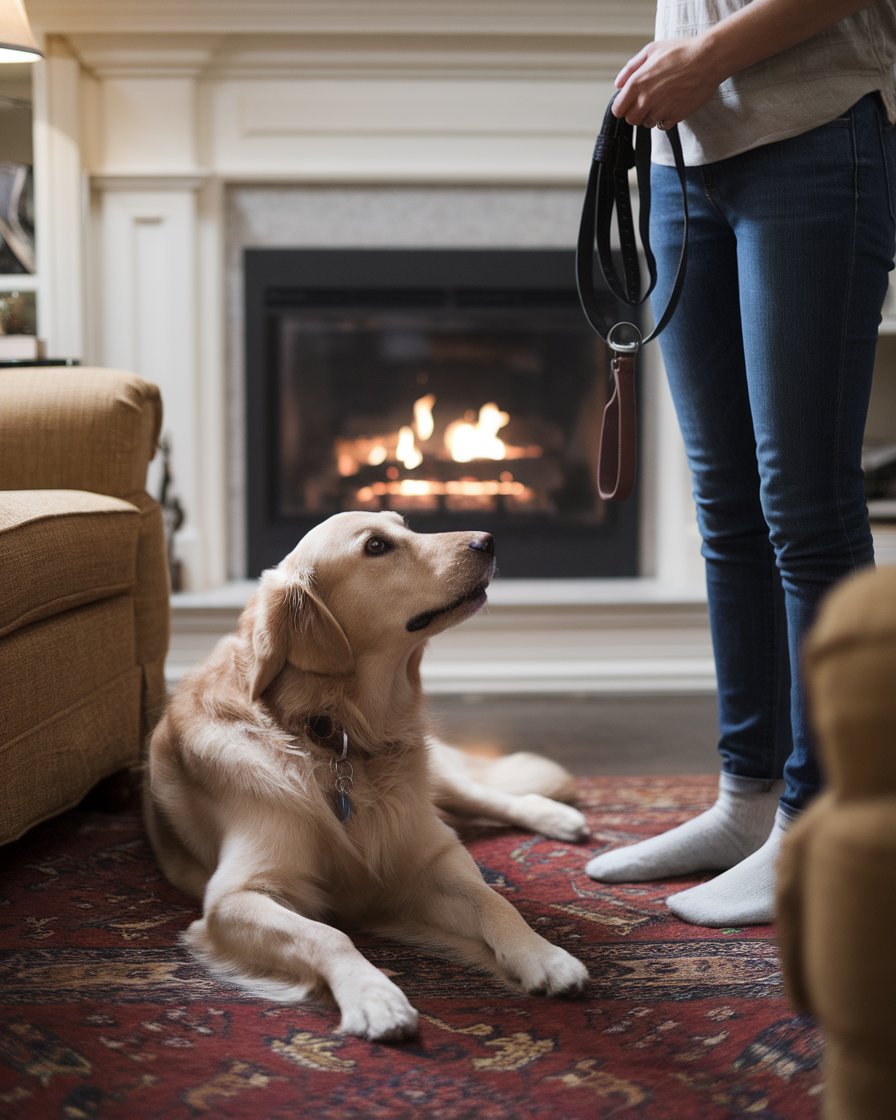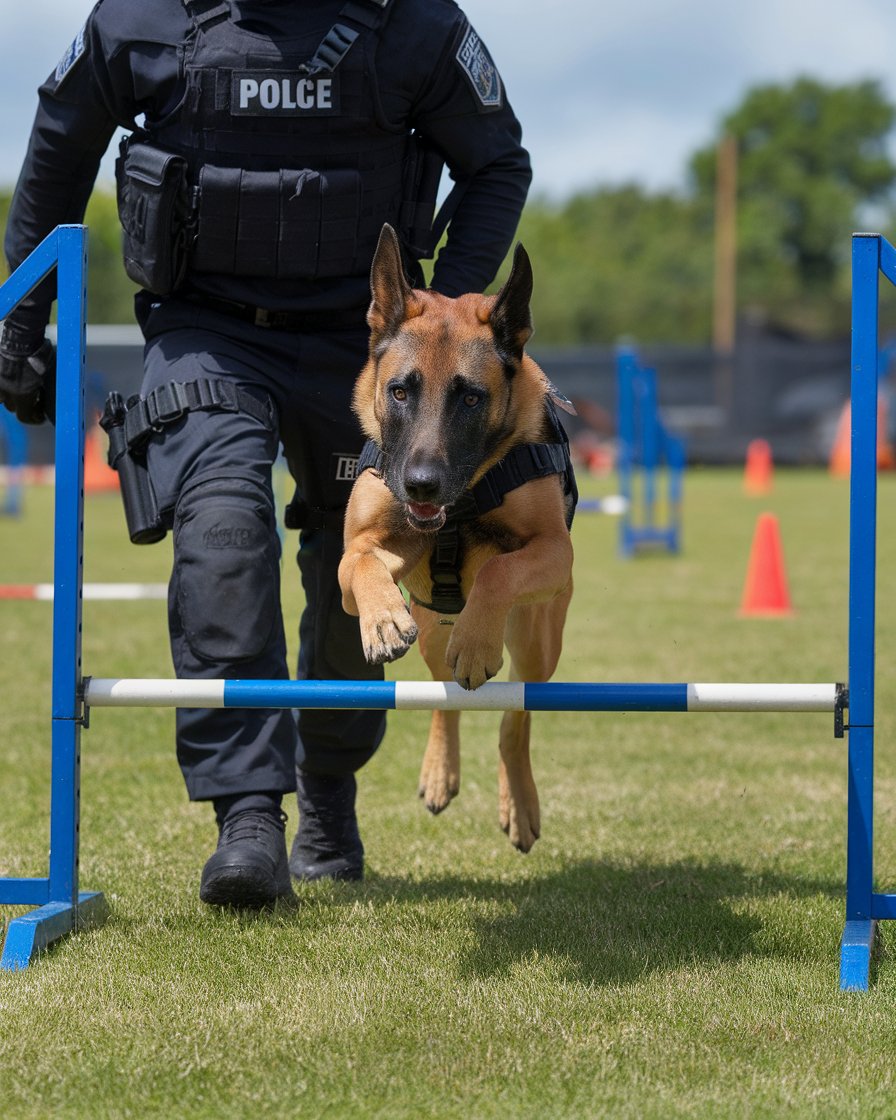Introduction
Compulsion training in dog training is a method where physical pressure or discomfort is used to force dogs to comply with commands. While this approach may yield immediate results, it often discourages the dog’s natural curiosity and willingness to learn. Trainers use this method to discourage unwanted behaviors by making the dog associate discomfort with actions they want to avoid. Although it seems effective in the short term, many believe this method can negatively affect the relationship with the dog, leading to stress, anxiety, and fear.
In recent years, the dog training community has embraced more balanced training techniques. Positive reinforcement encourages dogs to perform desirable behaviors without fear. This method aligns with training goals that build a stronger, healthier relationship between the dog and trainer. Instead of relying on force, many trainers use rewards like treats to reinforce good behavior. This shift reflects a growing understanding that dogs respond better when they feel valued, making training a more positive experience for all involved.
Key Takeaways
-
Compulsion training uses physical pressure or discomfort to force dogs to comply with commands, but it often results in fear and stress.
-
Over-reliance on aversive methods can weaken the bond between dog and trainer, leading to anxiety and aggression in dogs.
-
Historically, compulsion training was common, but modern trainers prefer positive reinforcement for better results and stronger relationships.
-
Aversive tools like choke chains and shock collars discourage unwanted behaviors but raise ethical concerns regarding long-term harm to dogs.
-
Positive reinforcement encourages a dog’s willingness to learn, creating more trusting and cooperative interactions during training.
-
Compulsion training in police dogs may ensure quick obedience, but it can compromise effectiveness and lead to stress in high-pressure situations.
Overview of Compulsion Training
Compulsion training is a dog training method that involves using physical pressure or discomfort to teach the dog to comply with commands. Often, trainers apply techniques like leash corrections, where a quick tug on the leash is used to prompt the dog into performing the desired action. While this method can be effective in achieving quick results, it comes with risks. Over-reliance on such tactics may cause fear, stress, and even aggression in dogs. This can impact behaviors that are self-rewarding and harm the bond between the trainer and dog. While some trainers who use this method believe it’s necessary, many in the dog world argue that training is known to be more effective when it encourages the dog through positive reinforcement, rather than punishment. The goal should be to keep the dog motivated and happy during training, fostering a healthier, trust-based relationship.
Compulsion Dog Training Methods Aversive Police Dog Training
-
Understanding Compulsion Training in Police Dogs Compulsion training involves using physical corrections or discomfort to make dogs obey commands, commonly seen in police dog training. This method is built on the idea that dogs will comply to avoid aversive stimuli, such as leash yanks or prong collar pressure. While it delivers immediate results, the long-term effects may foster anxiety and fear. Police dog trainers historically relied on these tactics for quick obedience in high-pressure scenarios, but modern techniques aim for a more balanced approach.
-
Impact of Aversive Methods on Police Canine Behavior Aversive training methods often suppress a dog’s natural behaviors, leading to obedience driven by fear. In police dog training, this can result in stress responses that compromise a dog’s ability to function effectively in dynamic and stressful environments. Over time, aversive methods can cause police dogs to become hesitant, making them less reliable in high-stakes situations. Shifting towards positive reinforcement can improve performance and build a stronger, trust-based relationship between the handler and dog.
-
Ethical Concerns in Using Aversive Tools Tools such as choke chains, prong collars, and shock collars are frequently used in compulsion training but have raised significant ethical concerns. These devices aim to correct behaviors by causing discomfort, but their use is increasingly scrutinized for the mental and physical harm they inflict on police dogs. Modern trainers now focus on more humane methods, using positive reinforcement to achieve better results without relying on force.
-
Transition to Positive Reinforcement in Police Training The shift from aversive training methods to positive reinforcement represents a major evolution in police dog training. By rewarding desirable behaviors instead of punishing unwanted ones, trainers can build a stronger bond with their dogs, improving their confidence and willingness to perform. This shift also enhances the dog’s well-being, reducing stress and anxiety while creating a more effective working relationship in law enforcement roles.
-
Long-Term Psychological Effects on Police Dogs Prolonged use of compulsion training can have lasting psychological effects on police dogs, including increased anxiety, fear-based aggression, and mistrust. These behaviors not only impair a dog’s ability to perform but also affect its quality of life. Modern training practices recognize that a balanced approach, with an emphasis on positive reinforcement, helps mitigate these issues and supports a healthier psychological state for police dogs.
-
The Future of Police Canine Training As dog training evolves, the future of police canine programs looks towards more humane and effective practices. Positive reinforcement techniques are not only proving to be more ethical but also more successful in achieving long-lasting results. By fostering an environment where dogs are motivated by rewards rather than fear, police dog training can develop dogs that are more confident, reliable, and adaptable in their roles.
Definition of Compulsion Training
Compulsion training refers to the use of physical corrections or negative reinforcement to make a dog comply with commands. For instance, applying pressure on the dog’s leash until they perform a “heel” command is one common practice. This method falls under the umbrella of positive punishment, where the dog experiences an aversive consequence for not performing correctly. Although compulsion training is effective in many cases, it can lead to negative associations with training sessions, making the dog less eager to engage. Over time, such tactics may also weaken the bond between dog owners and their pets, making positive reinforcement a preferred alternative.
Historical Context and Practices
Historically, compulsion training was considered the method of choice for obedience training and training classes, particularly when owners sought immediate compliance. Trainers believed that force or discomfort was necessary to get results, leading to the widespread use of aversive tools like choke chains. However, with the rise of reinforcement training and a better understanding of operant conditioning, many trainers now encourage the use of positive methods instead. The shift from using compulsion-based techniques has led to improved outcomes, creating a clear understanding that dogs respond better when trained with respect and care rather than fear and force.
Aversive Techniques in Dog Training
Aversive techniques in dog training involve using unpleasant stimuli to discourage undesired behaviors. These methods, often used for training to quickly suppress actions, work by associating negative experiences, like discomfort or fear, with unwanted behaviors. While dogs get the message and comply, aversive techniques can lead to anxiety, fear, and aggression over time. This means of teaching can damage the bond between dog and owner, making training less cooperative. In contrast, positive reinforcement training focuses on new behaviors by rewarding desired actions, fostering trust and a stronger relationship. The goal should be to encourage behaviors that are self-rewarding rather than relying on punishment, which ultimately impacts the dog’s emotional well-being.
Case Study: The Impact of Aversive Techniques in Police Dog Training
A case study conducted in 2018 by the University of Pennsylvania’s School of Veterinary Medicine explored the long-term effects of aversive training techniques on police dogs. The study analyzed 100 working police dogs trained using aversive tools like shock collars and prong collars. While these methods resulted in immediate obedience during high-stress situations, the study revealed that over 65% of the dogs developed signs of anxiety and stress. Additionally, dogs trained with these tools were found to be more reactive and aggressive when compared to dogs trained with positive reinforcement methods.
The case study highlighted that, although aversive methods provide short-term control, they often damage the bond between the dog and handler. Trainers who shifted to positive reinforcement techniques reported improved performance, better cooperation, and reduced stress in their dogs. This suggests that modern dog training methods, emphasizing positive reinforcement, are more effective for the well-being and reliability of police dogs.
Definition of Aversive Training Methods
Aversive training methods are based on the concept of using physical or emotional discomfort to modify a dog’s behavior. Common examples include leash corrections, where a sharp tug on the leash is used to stop unwanted actions, or the use of prong collars that tighten when the dog pulls. The goal is to correct behavior by introducing negative punishment or using aversives, which discourage the dog from repeating the unwanted behavior. However, while these techniques may yield short-term success, many trainers believe that they can cause long-term harm to a dog’s mental well-being and overall quality of life.
Common Aversive Tools Used
Aversive tools such as choke chains, prong collars, and shock collars are often used in traditional dog training methods. These tools apply pressure, discomfort, or even pain when the dog fails to comply with commands. For example, a shock collar delivers a mild electric shock if the dog does not come when called. While these tools can be effective in controlling behavior, they also raise ethical concerns in the training world. Many modern trainers now argue that using aversive tools compromises the dog’s trust in their owner and advocate for positive reinforcement methods, which focus on rewarding good behavior rather than punishing bad behavior.
Effects of Compulsion and Aversive Training on Dogs
Compulsion and aversive training methods may lead to short-term obedience, but the long-term effects on a dog’s mental and emotional health can be damaging. These training techniques, which rely on pressure, discomfort, or fear, often force the dog into submission rather than encouraging a true understanding of the desired behavior. Over time, this type of training can erode trust between a dog and its owner. Many dog trainers now advocate for positive reinforcement techniques that encourage a dog’s willingness to learn without fear. By using positive methods, owners can foster a more rewarding relationship with their pets, leading to lasting results.
Behavioral Compliance vs. True Performance
When dogs are trained using aversive methods, they often comply out of fear rather than understanding. Behavioral compliance happens when a dog performs a task merely to avoid punishment or discomfort. This is different from true performance, where a dog willingly engages in training because they understand the task and are motivated to perform it. While compulsion training might seem effective in the short term, it suppresses the dog’s natural curiosity and willingness to learn. Using positive reinforcement, where dogs are rewarded for correct behavior, encourages them to be active participants in training and builds a more trusting relationship between the dog and the owner.
Psychological Impact on Dogs
The psychological effects of aversive training can be profound. Dogs trained with forceful methods often develop anxiety, fear, and even aggression. They may associate their owner or specific training environments with negative experiences, leading to a breakdown in the trust that is crucial for a strong dog-owner relationship. Over time, these negative experiences can result in behavioral issues, such as fear-based aggression or withdrawal. On the other hand, a compassionate training approach that uses positive reinforcement not only encourages desired behaviors but also creates a safe and supportive environment where dogs feel valued and eager to learn.
“Training that uses fear as a motivator can never build trust. Trust is the foundation of any strong bond, especially between a dog and their handler.” – Dr. Ian Dunbar
Compulsion Training in Police Canines
Compulsion training has been a common method in the training of police canines, where physical corrections and aversive methods are often used to ensure quick obedience. The aim of this training is to enforce discipline and establish the dog’s role in high-stakes environments. However, while this approach may result in immediate compliance, it can also instill fear and anxiety in the dogs. Over time, this can compromise their effectiveness in the field, as dogs that operate out of fear may hesitate or become aggressive under pressure. Today, many trainers advocate for a balance between structure and positive reinforcement in canine training.
Traditional Approaches to Police Dog Training
Historically, police dog training relied on compulsion and aversive methods to instill obedience and discipline. Trainers often believed that using physical corrections, like leash jerks or choke chains, would ensure that dogs complied with commands swiftly, especially in dangerous situations. These traditional techniques emphasized strict control and quick response, prioritizing obedience over trust. However, while effective in some cases, such methods often resulted in anxious or overly aggressive dogs. In recent years, trainers have increasingly recognized the limitations of these approaches, especially when compared to the long-term benefits of positive reinforcement training that fosters a better relationship between handler and dog.
The Role of Aversive Methods in Law Enforcement
Aversive methods in law enforcement dog training may produce immediate results, but they can erode the relationship between the dog and handler. These methods, which use discomfort or fear to force compliance, might make a dog obedient in the short term but can diminish the dog’s willingness to work proactively. Police canines trained with aversive techniques may perform their duties out of fear rather than a genuine desire to engage in their role. This lack of enthusiasm can impact their performance, especially in high-stress situations. In contrast, more modern methods that use positive reinforcement build trust, leading to more reliable and eager police dogs who are better suited for their demanding jobs.
Conclusion
In conclusion, while compulsion training may yield quick results, its long-term impact on a dog’s mental well-being and trust can be harmful. Dogs often become anxious or fearful when forced to comply through physical pressure, making it difficult to foster a trusting relationship between dog and trainer. Positive reinforcement, on the other hand, has proven to be a more effective way to train a dog, encouraging them to willingly participate and making the training process more enjoyable.
By rewarding desirable behaviors with treats or praise, trainers create an environment where dogs feel valued and eager to learn. This approach not only improves the dog’s life but also strengthens the bond with their trainer. Modern training methods show that dogs perform better when treated with care, and using a combination of humane techniques ensures that training works in the long run without relying on fear or discomfort.















